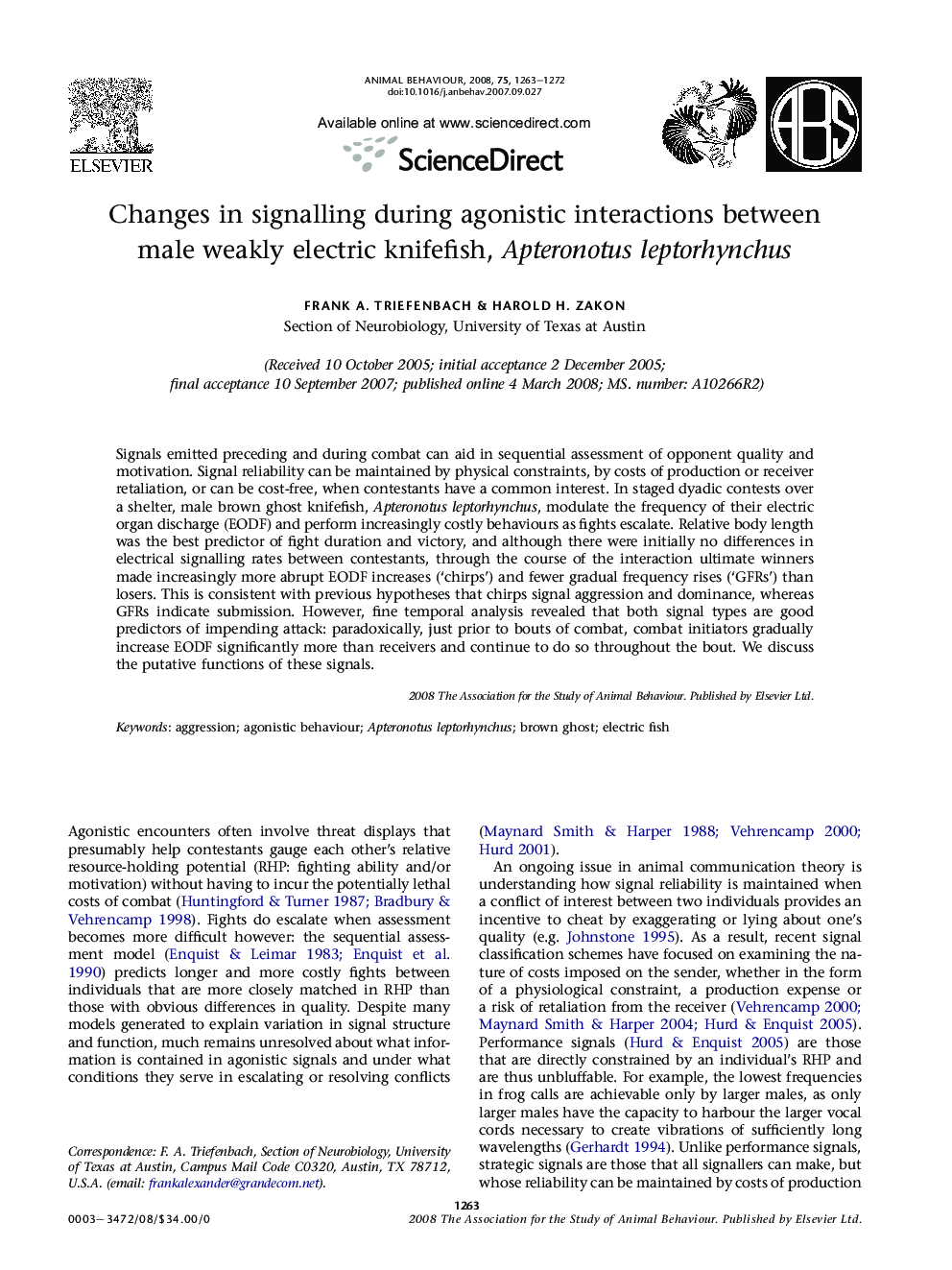| Article ID | Journal | Published Year | Pages | File Type |
|---|---|---|---|---|
| 2417741 | Animal Behaviour | 2008 | 10 Pages |
Signals emitted preceding and during combat can aid in sequential assessment of opponent quality and motivation. Signal reliability can be maintained by physical constraints, by costs of production or receiver retaliation, or can be cost-free, when contestants have a common interest. In staged dyadic contests over a shelter, male brown ghost knifefish, Apteronotus leptorhynchus, modulate the frequency of their electric organ discharge (EODF) and perform increasingly costly behaviours as fights escalate. Relative body length was the best predictor of fight duration and victory, and although there were initially no differences in electrical signalling rates between contestants, through the course of the interaction ultimate winners made increasingly more abrupt EODF increases (‘chirps’) and fewer gradual frequency rises (‘GFRs’) than losers. This is consistent with previous hypotheses that chirps signal aggression and dominance, whereas GFRs indicate submission. However, fine temporal analysis revealed that both signal types are good predictors of impending attack: paradoxically, just prior to bouts of combat, combat initiators gradually increase EODF significantly more than receivers and continue to do so throughout the bout. We discuss the putative functions of these signals.
